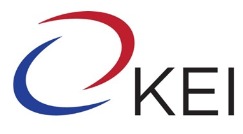1984 Posts located
Asia
1984 Posts located
China is India’s largest source of imports, nearly 15 percent of which are sourced from China. Many of India’s major imports—electrical machinery, electronic and semiconductor devices, fertilizers, antibiotics, iron and…
July 30, 2021
This paper assesses the potential for South Korea to be a regional leader in advancing environmental, social, and governance (ESG) investing, and supporting sustainable development in the Asia-Pacific region. Many…
June 28, 2021
South Korean President Moon Jae-in’s New Southern Policy (NSP)—the most recent effort by Seoul to boost relations with Southeast Asian countries and India and diversify its relationships beyond four major…
May 17, 2021
This paper addresses the U.S.-South Korea alliance in the context of Asia’s evolving security architecture. At the crux of the issue is the Biden administration’s desire to uphold the rules-based…
May 17, 2021
Despite being industrial powerhouses, Korea and Japan are both resource-poor nations with limited domestic sources of energy. Powering their economies required both to develop supply chains for fossil fuels, nuclear…
January 25, 2024
In 2023, KEI has set out on its “Rethinking Korea initiative,” which explores the evolution of U.S.-Korea relations, Korea’s place in the world, and rapid changes in Korean society itself.…
October 12, 2023
In 2023, KEI has set out on its “Rethinking Korea initiative,” which explores the evolution of U.S.-Korea relations, Korea’s place in the world, and rapid changes in Korean society itself.…
August 24, 2023
In 2023, KEI has set out on its “Rethinking Korea initiative,” which explores the evolution of U.S.-Korea relations, Korea’s place in the world, and rapid changes in Korean society itself.…
June 26, 2023
The debate over sovereign artificial intelligence (AI) highlights the need and desire for nations to develop their own AI systems, including large language models (LLMs), tailored to their unique cultural and historical contexts. This idea has gained traction in Seoul, where US LLMs like ChatGPT have often fallen short in addressing questions that require a…
January 8, 2025
Contributors (last name alphabetical): Je Heon (James) Kim, Joo Young Kim This timeline is a second part of a series that covers “major events” in the aftermath of South Korean President Yoon Suk Yeol’s declaration of martial law on December 3, 2024. This part covers the events from Prime Minister Han Duck-soo’s assumption of the…
January 2, 2025
Both North Korea and South Korea sought to redefine their relationship in 2024. In the past, both countries have publicly affirmed that the unification of the two Koreas is a national priority, but the two governments have engaged in low-level hostilities and high-level denunciations, while little concrete effort has been made to bring the two…
December 30, 2024
South Korea faced the prospect of political paralysis and a protracted constitutional crisis resulting from the declaration of martial law by President Yoon Suk Yeol and its dismissal hours later by a National Assembly resolution. On December 3, Yoon announced at 22:25 his intent to impose martial law “to eradicate pro-North Korea forces and protect…
